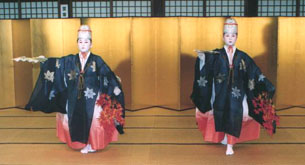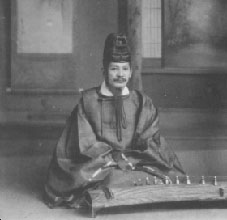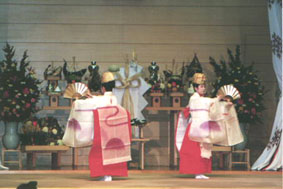


|
Kibigaku , which was based on Gagaku etc., was born in Okayama in the beginning of the Meiji era. The main characteristic is the use of Koto as a leading part unlike Chuseigaku (in which Koto is used as a support). All tunes include singing. Players play the Koto singing a song. And Shou, Hichiriki, Ryuteki, and sometimes Taiko, Syouko, Kakko are added as an accompaniment. Kibigaku was thought of as "new music" during the Meiji era. With the Gagaku flavor and new melody (which Gagaku doesn't have), Kibigaku became popular as the music which had modern feeling in those days. The effects of national studies and policy can be found in the songs which were composed when Kibigaku started. Some tunes are with dancing. This dance is called Kibimai (mai refers to dancing). |
|
Konkokyo and Kibigaku |

|
Kibimai |

|
|
|
|